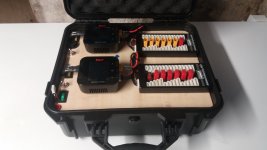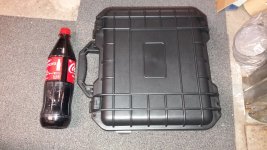eMark
100 kW
Can assure you NOT trolling, but rather calling you out as to why you didn't test and balance the cells (at least within 100mV) before making up your 14 p-groups of 10p. Likewise it would be of some importance to know the brand of cells you are using and their condition having been in storage "collecting dust" ... especially with such a wide range of p-group variances from 3.584V (8p) to 4.195V (14p).
A DIY build (no matter how good) is no better than the condition of its cells. My post(s) should be viewed as constructive critique and NOT trollling. Hoping you do realize that that is the case with your DIY battery case. Your simplier build that proves to be just as good or possibly even better requiring less expensive equipment and not as labor intensive as a DIY spot-welded build.
Please do let us know how long it takes your BMS to balance all fourteen 10p groups from 50mV to within 25mV of each other.
A DIY build (no matter how good) is no better than the condition of its cells. My post(s) should be viewed as constructive critique and NOT trollling. Hoping you do realize that that is the case with your DIY battery case. Your simplier build that proves to be just as good or possibly even better requiring less expensive equipment and not as labor intensive as a DIY spot-welded build.
Don't be disappinted (as none of us will be disappointed) if your 'smart' BMS only balances p-groups within 25mV of each other.Dui said:Trying to get all cells within 50mV of each other, then hopefully the BMS should be able to take them within 0.001V
Please do let us know how long it takes your BMS to balance all fourteen 10p groups from 50mV to within 25mV of each other.



